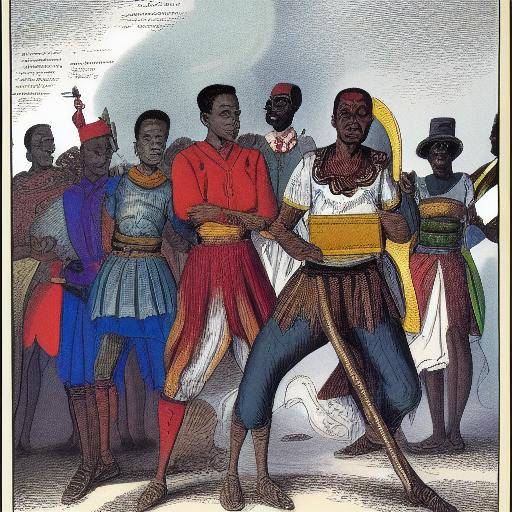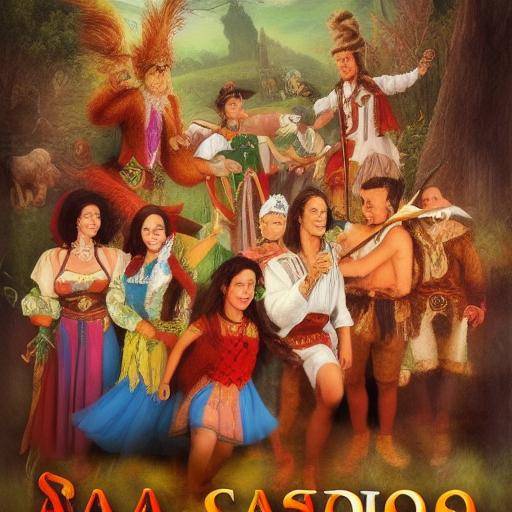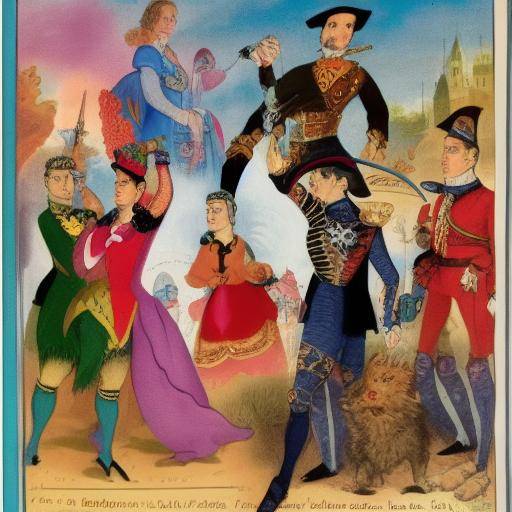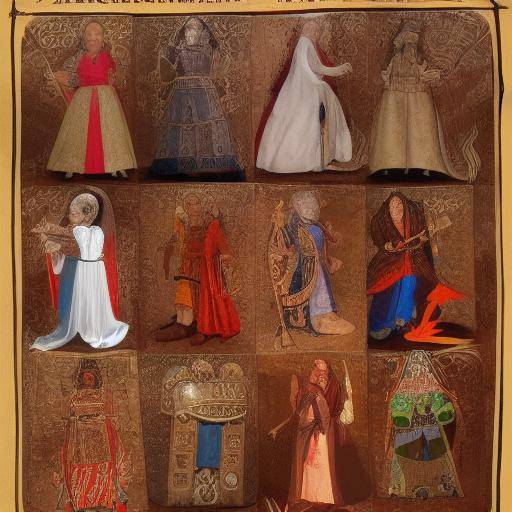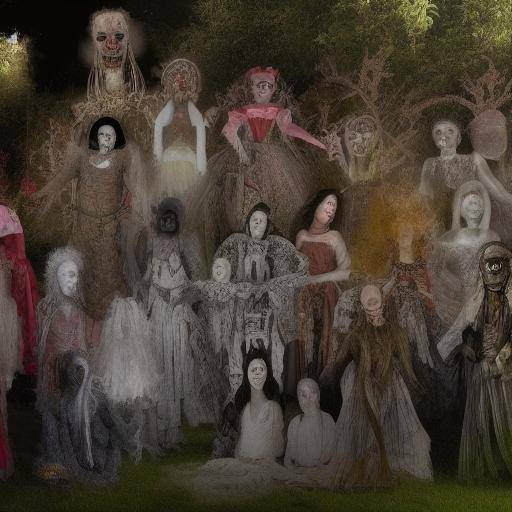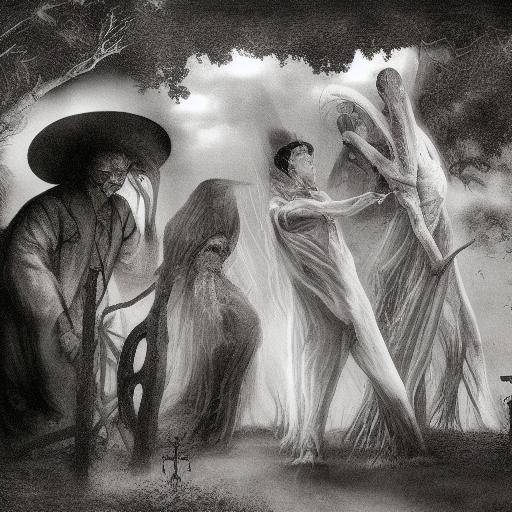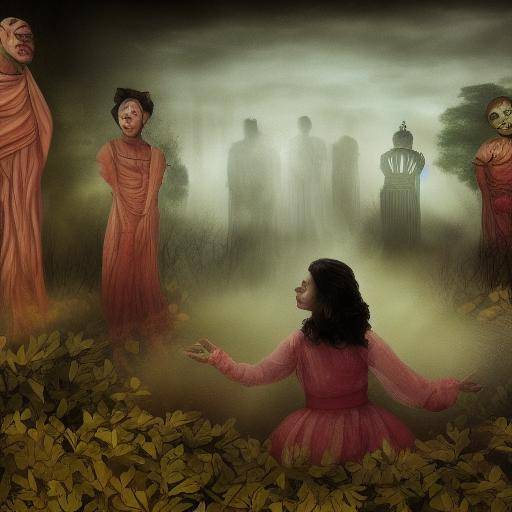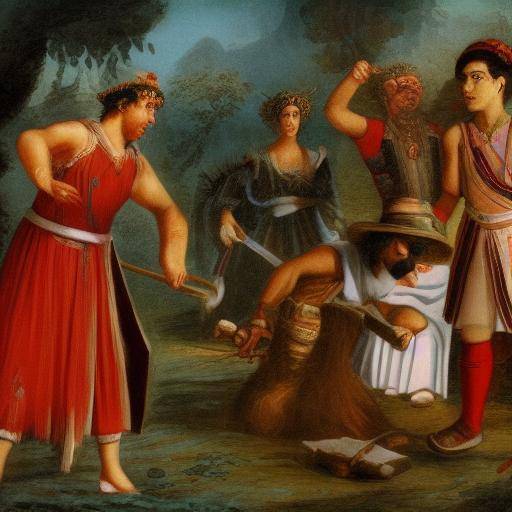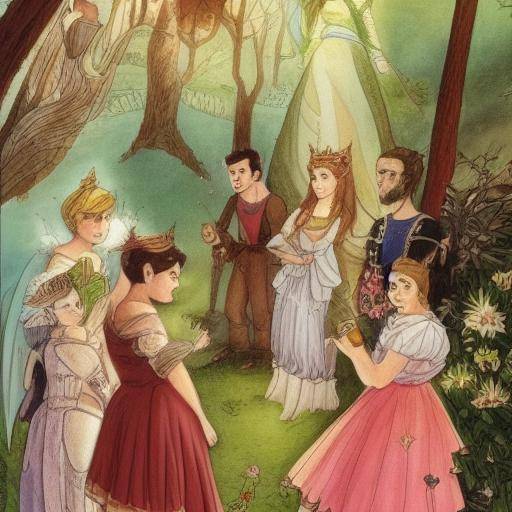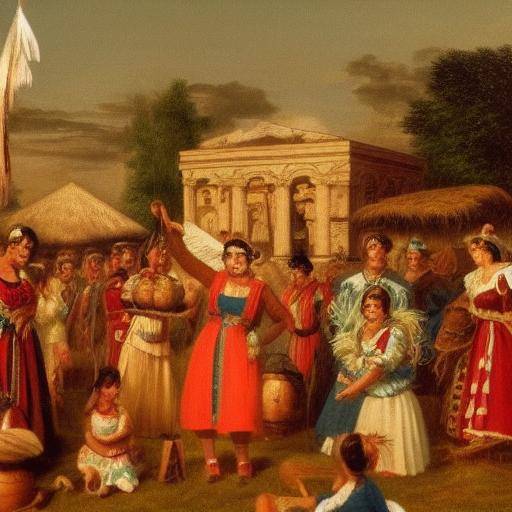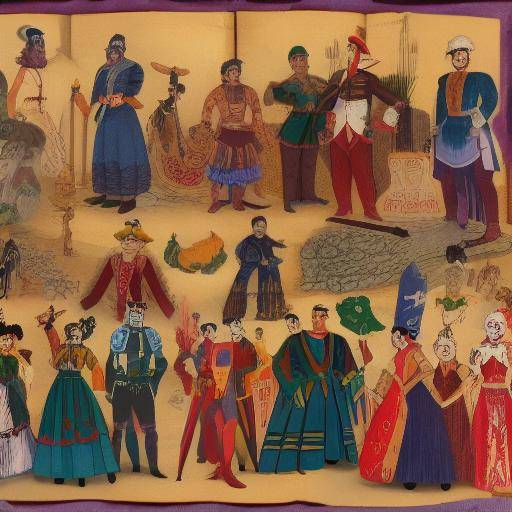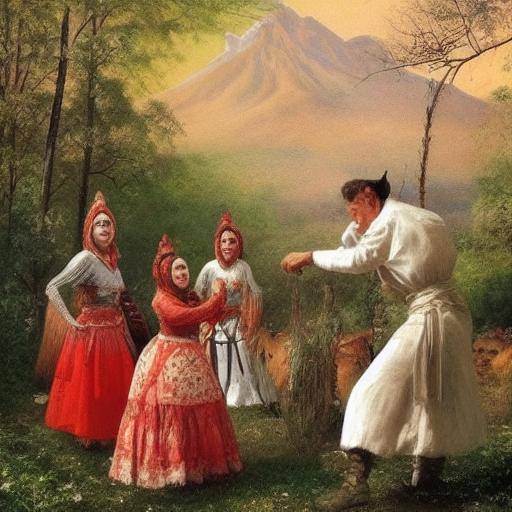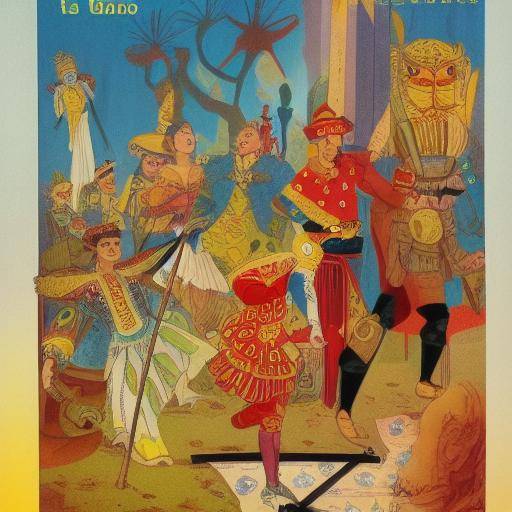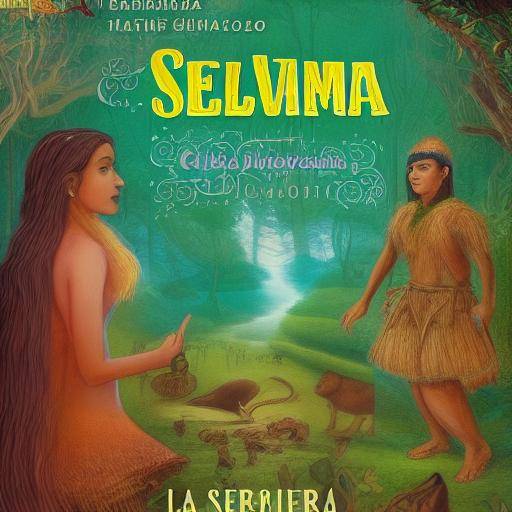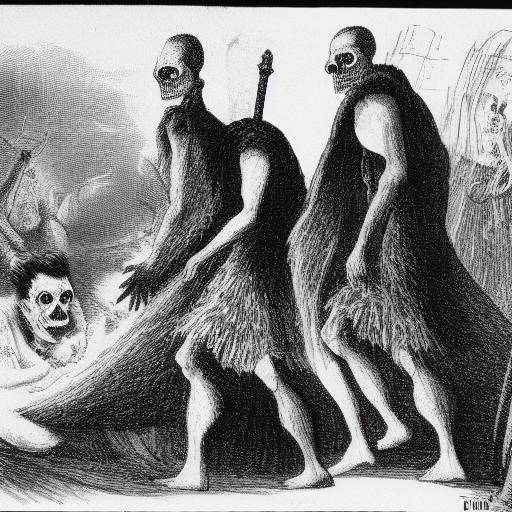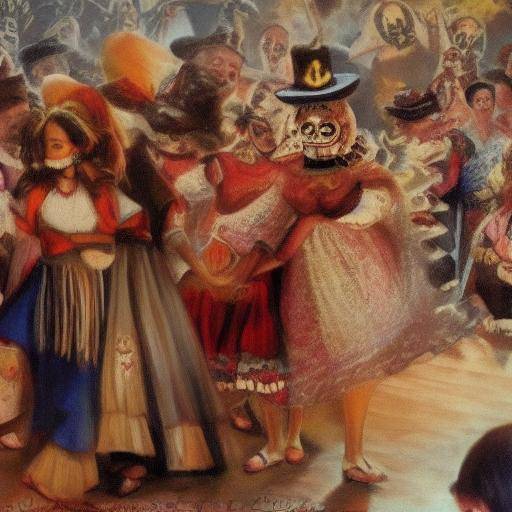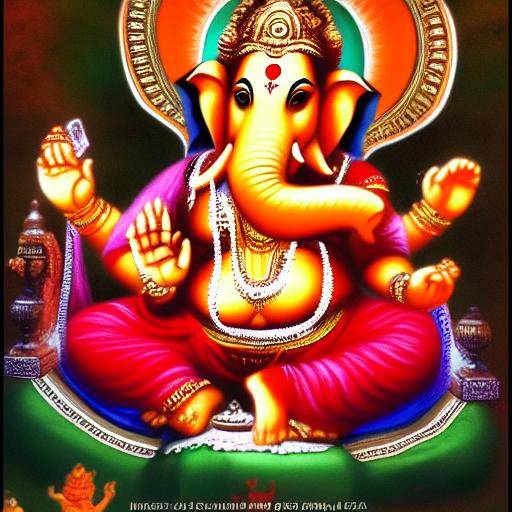
Introduction
Ganesha, the Hindu god with an elephant head, is one of the most beloved and venerated deities in Hindu mythology. Their presence extends through ancient accounts and their stories are rooted in the traditions and beliefs of India and beyond. In this article, we will explore the deep roots of Ganesha, its associated Hindu myths and the fascinating stories surrounding it. From its origins to its contemporary forms of worship, we will discover the cultural and spiritual richness that revolves around this dear god. Join us on this journey to explore the rich narratives that tell the stories of Ganesha, the god of the beginnings.
History and Background
Ganesha, also known as Vinayaka or Ganapati, is widely venerated as the obstacle remover, the pattern of arts and sciences, and the god of the beginning. His unique representation with human body and elephant head makes him an iconic figure in Hindu mythology. The first records of Ganesha go back to the Hindu sacred texts, the Vedas, where it is mentioned as a significant god. Later, through the Puranas, the different narratives were established that shaped his worship and devotion in India and beyond.
The figure of Ganesha acquired a massive popularity during the medieval and modern period in India, becoming one of the most revered deities. His connection to good fortune, wisdom and success has made him an omnipresent symbol in Hindu culture.
Origins and Evolution
The origin of Ganesha dates back to very ancient accounts, which tell how Parvati, Shiva's wife, created Ganesha with land and infused him with life, making him his personal guardian. This narrative is only one of the many stories that explain the birth and evolution of this dear god. As Ganesha's worship and devotion spread throughout India, there were variations in his cult, each weaving new layers in his rich mythology.
Impact and Historical Significance
Throughout history, Ganesha has been venerated by people of diverse traditions and cultures in India and around the world. His influence extends to festivals, rituals and ceremonies in which his presence is invoked to receive blessings and overcome obstacles. The figure of Ganesha has transcended the limits of the religious to become a cultural symbol of good fortune and wisdom. Ganesha's legacy is manifested in sculptures, paintings and festivals that capture the imagination and heart of those who worship him.
Analysis in Deep
The impact of Ganesha and his stories transcends the purely religious, leaving a profound impression on society and culture. Ganesha's presence is manifested in various ways, from personal devotion to artistic and cultural expressions. The veneration of Ganesha has been a source of inspiration for artists, writers and thinkers, demonstrating their lasting influence over the centuries.
Ganesha worship has also evolved in the modern context, adapting to changing social and cultural dynamics. The global adoption of Ganesha's iconography and histories has led its teachings to an increasingly diverse audience, enriching understanding and appreciation for Hindu mythology.
Contemporary Perspectives
From a contemporary perspective, Ganesha's stories continue to be a source of inspiration and reflection. His representation as the obstacle remover has found spiritual and philosophical enpractice resonance, where devotees seek their grace to overcome challenges and find clarity in their lives. Ganesha's artistic and literary representations have also evolved over time, reflecting its eternal relevance in modern society.
Benefits and Challenges
Ganesha worship offers tangible benefits for those who seek their guidance and protection. Their role as the obstacle remover is a source of comfort and hope for many. However, it also poses challenges in terms of interpretation and adaptation in a contemporary context. The balance between tradition and innovation is an important consideration in the continuous evolution of Ganesha stories.
Perspectives and Views
Different interpretations of Ganesha's stories have led to a diversity of opinions and perspectives. From religious scholars and spiritual leaders to artists and academics, Ganesha's stories have been the subject of analysis and debate. The variety of approaches demonstrates the depth and versatility of your mythology, revealing new layers of meaning in each reflection.
Comprehensive review
The influence of Ganesha, Hindu myths and related stories extends beyond spiritual and cultural. Their presence in contemporary society reflects their ability to inspire and impact multiple aspects of human life.
Applications and Best Practices
Ganesha's stories offer valuable lessons that apply in various contexts, from solving daily problems to overcoming existential challenges. Ganesha's wisdom and benevolence are illustrated through his stories, providing guidance and comfort to those who seek answers in times of uncertainty.
Opinions of Experts and Future Perspectives
The vision of scholars and experts about Ganesha's stories shed light on their meaning in the modern world. Their analyses offer a insightful look at the future implications of these stories, highlighting their continued relevance in a constantly changing world. Future perspectives reveal the potential of Ganesha's stories to influence society and culture in the coming years.
Comparative analysis
Explore the similarities, differences and synergies between Ganesha, Hindu myths and associated stories shed light on the rich interconnection of these sacred narratives. By comparing these elements, there is a deeper understanding of their meanings and applications in different contexts.
While everyone has their unique identity, there is a common fabric that binds Ganesha, Hindu myths and related stories, demonstrating their interdependence in the understanding and practice of spirituality.
Practical Tips and Accessible Tips
As we explore Ganesha's stories, it is important to consider how we can integrate their teachings into our daily lives. Here are some practical tips derived from these stories to encourage personal growth and spiritual connection:
- Open resilience and adaptability, like Ganesha, to overcome obstacles.
- It cultivates wisdom and knowledge through the constant quest for learning, reflecting the erudi nature of Ganesha.
- Practice compassion and goodness towards others, in tune with the benevolent nature of Ganesha.
These tips encapsulate the timeless teachings of Ganesha's stories, providing practical guidelines to apply their wisdom in everyday life.
Conclusions and FAQs
Conclusions
The stories of Ganesha, the god of the beginning, reveal a deeply rooted legacy in culture and spirituality. Supresence transcends the borders of time and space, offering inspiration and guidance to those seeking enlightenment and overcoming. Through the exploration of their Hindu myths and associated stories, we have unraveled the layers of wisdom and meaning that enrich our understanding of this venerated deity.
Frequently asked questions
1. What is the meaning of the elephant in the representation of Ganesha?
The representation of Ganesha with an elephant head symbolizes intellect, wisdom and overcoming obstacles. The elephant is considered a symbol of strength and power in the Hindu tradition, and its association with Ganesha reflects its role as the obstacle remover and the protector of wisdom.
2. Why is Ganesha considered the god of the beginnings?
Ganesha is venerated as the god of the beginnings because of his role in removing obstacles and facilitating new beginnings. His blessing is sought by embarking on new projects, businesses or stages of life, since it is believed that his presence guarantees an auspicious and free beginning of impediments.
3. What is the most outstanding festival dedicated to Ganesha?
The most outstanding festival dedicated to Ganesha is the "Ganesh Chaturthi", which celebrates its birth. During this festival, worship rituals are performed and Ganesha statues are erected, followed by processions and immersion ceremonies in water bodies.
4. What is the connection between Ganesha and writing?
Ganesha is considered the pattern of arts and sciences, and is invoked at the beginning of any creative or academic activity, including writing. His role as a guardian of wisdom and knowledge makes him an auspicious figure for those who seek inspiration and clarity in their creative and academic efforts.
5. What lessons can we learn from Ganesha's stories in modern life?
Ganesha's stories offer valuable lessons on resilience, wisdom and compassion, which are especially relevant in modern life. Their ability to overcome obstacles, seek knowledge and show compassion to others provides inspiration to face contemporary challenges with determination and benevolence.
6. Why is Ganesha so popular outside India?
Ganesha's popularity outside India is due to its universal message of overcoming obstacles and its role as a symbol of good fortune and wisdom. Its unique representation and positive impact have made it a venerated figure in diverse cultures and communities around the world.
Through the exploration of Ganesha's stories, we have unearthed the wealth and relevance that these timeless narratives have in modern society. From his role as the god of the beginnings to his influence on arts and culture, Ganesha continues to inspire and connect people from around the world. In his immense wisdom and generosity, Ganesha gives us an eternal reminder of the importance of resilience, compassion and the incessant pursuit of knowledge and overcoming. May the stories of Ganesha continue to guide us in our lives, bringing good fortune and wisdom to those who seek their blessing.

